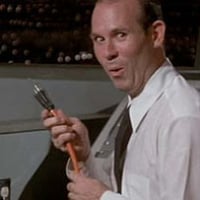Circulators or zone valves?

https://forum.heatinghelp.com/discussion/comment/1569078#Comment_1569078
The supply manifold (not in the pic) is a tangled mess of older steel pipe and copper in the basement ceiling. Attached pic is the return manifold of the system. AFAIK that work is 10 years old and looks fine to me.

Most of the supply/return piping in the basement ceiling is either in a bad spot for the reno work or old / corroded. I want a total redo of the basement hydronic piping using PAP. I am finding the HVAC contractor's wanting to rip and replace the entire basement mechanical room, including the return manifold / pumps / controllers. I'm saying nope, work with the return manifold.
My question. If I relent to a complete redo of the mechanical room, what are my decision points re: going back in with circulator per zone versus zone valves with one circulator?
Thanks a bunch.
Comments
-
My opinion. If you’re using a condensing boiler, it’s often tough to avoid over pumping and consequently inefficiently high return to water temperatures with pump zoned systems. If you’re not using a high efficiency boiler it still tends to consume far more power than necessary. A single delta p pump often uses only around 15 to 40 watts, but each of your circulators probably uses 75watts totalling to several hundred watts.0
-
I don't like zone circs because they are generally over pumping and waste electricity. That being said, I don't think I would scrap what you have over that personal preference.
What I don't like is that you are pumping into the expansion tank rather than away. The issues this causes will get worse when you switch to pex, because it has a smaller inside diameter. What would it take to make the return manifold the supply manifold and flip the circs?"If you can't explain it simply, you don't understand it well enough"
Albert Einstein1 -
-
I think zone valves are generally more reliable and easier to replace than circulators. When you consider isolation flanges and line voltage wiring needed for circs, I think zone valves are less expensive.
I have noticed that the Honeywell valves fail quit often and that Taco's rarely fail. The thermal valves on the market probably fall somewhere in between."If you can't explain it simply, you don't understand it well enough"
Albert Einstein1 -
Ideally you would want to know the flow requirement of each zone. Then the pump speeds could be adjusted, or balance valves added to "tune" the flow rate to to actual requirement.
If you are up for a major change, still be good to know the flow requirements. A single delta p and Caleffi Z-one valves ( I work for Caleffi) would be my suggestion.
With zone circulators it is critical that the header is sized large enough to supply the required GPM of all the zones. If not the pumps will argue with one another for flow. Check valves in all the pumps too, of course.
A heat load calc would be the very best first step before redoing any piping or components.
Assuming there is a primary secondary header under the boiler?Bob "hot rod" Rohr
trainer for Caleffi NA
Living the hydronic dream0 -
We prefer to use a singe variable speed pump with multi zone residential systems. We have found that if we install the zone valves on the returns they tend to last longer as there is less force when they open and close (thanks @DanHolohan many years ago).0
-
Your existing manifold is workable; you can tweak it for better performance as suggested above. I prefer circs, ZVs, & relays at chest or eye level for easy access to repair or replace, and always expect relays & electronics to be installed up and out of the way of an accidental drowning......0
-
@hot_rod yes there is a primary loop under the boiler.
The heat loss calc is in the vicinity of 155K, but that will drop as the house is better insulated / air sealed. I do not yet have that broken down by room, though I do have the EDRs of the CI emitters (baseboard and radiators).
Zone values on the return, interesting. Might be an easier adaptation of the existing return header.
@MikeL_2 yeah the position of the existing electronics and AC sockets ... not good if a leak occurs
0 -
pros and cons with ZV location. On the supply they give you 100% shutoff from and ghost flow conditions, they are in warmer fluid however.
On the return most of the ∆P added by the circ is scrubbed away thru the distribution piping and emitters.
Even the typical high flow high 7.7- 8 Cv zone valves have 20 ∆P shutoff. It would be a mighty circulator on a residential system that developed that kind of ∆P
This classic B&G drawing shows how head added by a circulator get "used or scrubbed away" by the piping, fittings and heat emitters in the circuit.
Low Cv valves can shutoff against 75 psi ∆P. You see low Cv valves common on most commercial products, fan coils, etc.Bob "hot rod" Rohr
trainer for Caleffi NA
Living the hydronic dream0 -
You might want to consider a combination of circulators and zone valves. Remember that when you add a zone valve to a 3/4" baseboard loop you are reducing the flow rate from 4 GPM to 3 GPM (approx.) so you must reduce the lineal feet of baseboard from 65+ feet of heating element down to about 50 ft. per zone. Old radiator systems will also have a decreased capacity with the restriction of a zone valve. As long as you have less than say 30,000 BTUs of load on a 3/4" zone you should be just fine. Now put 3 or 4 of those zones on a Taco 007e pump and you will do just fine. If you have a loop that has a total capacity of something over 30,000 BTUs then you will need to leave that zone on its own circulator or risk the chance of insufficient capacity at design temperature. (that means not enough heat at the end of the zone when it gets really cold). As long as it does not get really cold... you may not notice the problem.
Google: "Zoning Made Easy" and read this text. Not real long but gives insight in easy to understand terms.
Edward Young Retired
After you make that expensive repair and you still have the same problem, What will you check next?
0 -
That is an interesting way to look at it and may well be accurate if your head is the same in both scenarios. If, however, you consider the cv of the zone valve in your circulator selection, it is a moot conversation and the flow will remain the same.EdTheHeaterMan said:You might want to consider a combination of circulators and zone valves. Remember that when you add a zone valve to a 3/4" baseboard loop you are reducing the flow rate from 4 GPM to 3 GPM (approx.) so you must reduce the lineal feet of baseboard from 65+ feet of heating element down to about 50 ft. per zone. Old radiator systems will also have a decreased capacity with the restriction of a zone valve. As long as you have less than say 30,000 BTUs of load on a 3/4" zone you should be just fine. Now put 3 or 4 of those zones on a Taco 007e pump and you will do just fine. If you have a loop that has a total capacity of something over 30,000 BTUs then you will need to leave that zone on its own circulator or risk the chance of insufficient capacity at design temperature. (that means not enough heat at the end of the zone when it gets really cold). As long as it does not get really cold... you may not notice the problem.
Google: "Zoning Made Easy" and read this text. Not real long but gives insight in easy to understand terms."If you can't explain it simply, you don't understand it well enough"
Albert Einstein1 -
A typical 7.5 Cv zone valve with a 4 gpm flow thru it is . 66 ft of head or .28 psi pressure drop. I doubt you would notice much or any change in the output of a 4 gpm 3/4" baseboard loop with a ZV added?EdTheHeaterMan said:You might want to consider a combination of circulators and zone valves. Remember that when you add a zone valve to a 3/4" baseboard loop you are reducing the flow rate from 4 GPM to 3 GPM (approx.) so you must reduce the lineal feet of baseboard from 65+ feet of heating element down to about 50 ft. per zone. Old radiator systems will also have a decreased capacity with the restriction of a zone valve. As long as you have less than say 30,000 BTUs of load on a 3/4" zone you should be just fine. Now put 3 or 4 of those zones on a Taco 007e pump and you will do just fine. If you have a loop that has a total capacity of something over 30,000 BTUs then you will need to leave that zone on its own circulator or risk the chance of insufficient capacity at design temperature. (that means not enough heat at the end of the zone when it gets really cold). As long as it does not get really cold... you may not notice the problem.
Google: "Zoning Made Easy" and read this text. Not real long but gives insight in easy to understand terms.
Certainly not a 1 gpm reduction, or the need to reduce the loop by 15'?
Bob "hot rod" Rohr
trainer for Caleffi NA
Living the hydronic dream0 -
Related to this renovation I have described ...
The second floor is its own zone of CI baseboard and radiators. The second floor bathroom will be remodeled thus the emitter may change from existing CI radiator to maybe something like a Runtal panel (lower thermal mass?).
GC is telling me there will be issues mixing emitter types on the same 2nd floor zone. What do you think? I could go back into that bathroom with CI baseboard instead of a Runtal.
First floor kitchen may also have an emitter change. But is it already its own zone.
Thank you0
Categories
- All Categories
- 87.3K THE MAIN WALL
- 3.2K A-C, Heat Pumps & Refrigeration
- 61 Biomass
- 429 Carbon Monoxide Awareness
- 120 Chimneys & Flues
- 2.1K Domestic Hot Water
- 5.8K Gas Heating
- 115 Geothermal
- 166 Indoor-Air Quality
- 3.7K Oil Heating
- 77 Pipe Deterioration
- 1K Plumbing
- 6.5K Radiant Heating
- 395 Solar
- 15.7K Strictly Steam
- 3.4K Thermostats and Controls
- 56 Water Quality
- 51 Industry Classes
- 50 Job Opportunities
- 18 Recall Announcements





